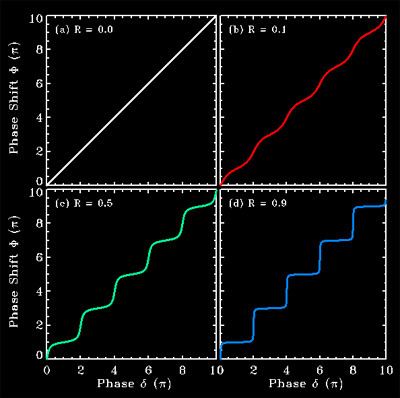 | ||
In optics, a Gires–Tournois etalon is a transparent plate with two reflecting surfaces, one of which has very high reflectivity. Due to multiple-beam interference, light incident on a Gires–Tournois etalon is (almost) completely reflected, but has an effective phase shift that depends strongly on the wavelength of the light.
The complex amplitude reflectivity of a Gires–Tournois etalon is given by
where r1 is the complex amplitude reflectivity of the first surface,
Nonlinear effective phase shift
Suppose that
To show this effect, we assume
One obtains
For R = 0, no reflection from the first surface and the resultant nonlinear phase shift is equal to the round-trip phase change (
Gires–Tournois etalons are closely related to Fabry–Pérot etalons.
